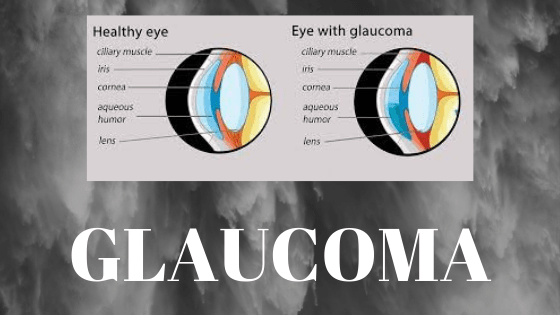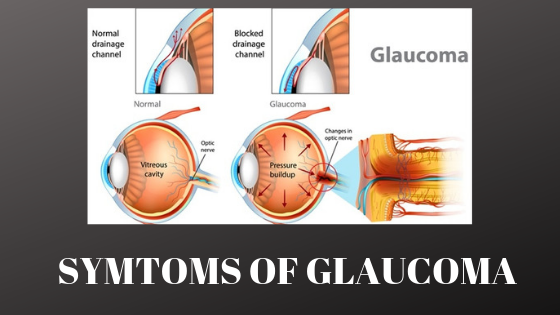Contents
About Glaucoma
Glaucoma is nearly common in the Elderly and can create harm to the optic nerve if left untreated. There is a little space in front of the eye named the anterior chamber. Thin liquid flows in and out of the anterior chamber, this fluid nourishes and washes nearby tissues. If a person has glaucoma, the fluid flows gradually out of the eye. This starts with fluid build-up, and stress in the eye increases. Unless this pressure is brought down and examined, the optic nerve and different parts of the eye may also damage affecting to loss of vision.
Causes
Experts are not sure of the exact causes, but states are split into 2 sections:
- Primary – This suggests that the problem is not known.
- Secondary – The condition has a well-known problem such as a tumor, diabetes, cataract at an advanced stage, or redness.
There are various risk elements:
- Old age
- Ethnic history – East Asians, African Americans, and those of Hispanic origin have a greater risk of growing glaucoma, matched with Caucasians.
- Diabetes or hypothyroidism conditions create some illnesses
- Eye injury
- Eye surgery
- Myopia i.e. nearsightedness
Types
There are 4 types:
- Open-angle
- Closed-angle
- Low Tension
- Pigmentary
Primary open-angle (chronic glaucoma)
This type improves very casually. The patient may not observe any signs like a small loss of vision that may go unrecognized. In this type of glaucoma, several people do not get therapeutic help until permanent harm has already happened.
Closed-angle (acute angle-closure glaucoma)
This can occur suddenly- the patient usually experiences eye pain and fast vision loss.
Fortunately, the signs of pain and discomfort make the patient ask for medical help, ending in immediate treatment, which normally stops any lasting damage to happen.
Low-tension
This is a type of Glaucoma that is not understood by all the doctors. Even though eye pressure is a normal thing, but optic nerve damage still occurs. Reduced Blood supply can result in optic nerve damage.
Pigmentary
This is a kind of open-angle glaucoma and it develops during the early or middle adulthood. The Pigment cells get dispersed within the eye. If these cells get to build in the channels that drain fluid from the eye, they can upset the normal flow of fluids in the eye, causing a rise in eye pressure.
Symptoms
The signs and symptoms of primary open-angle and acute angle-closure glaucoma are different:
Symptoms of primary open-angle
- The Peripheral vision gets gradually lost. This always affects both of the eyes.
- In advanced stages, the patient may have tunnel vision.
Symptoms of closed-angle
- Sever Eye pain
- Blurred vision.
- Eye pain is accompanied by nausea and sometimes with vomiting.
- Lights have extra halo-like glows around them due to this.
- Redness in eyes.
- Sudden vision problems, especially when you are in poor lighting.
Detecting glaucoma
During the routine eye checkups, a small instrument is used to measure your intraocular pressure (IOP). During tonometry an eye test, eye drops may or may not be used for making your cornea less sensitive.
Normal IOP typically is considered to have a reading below 21 mmHg (millimeters of mercury) — It is a unit of measurement based on how much force is exerted within a certain defined area.
Higher IOP readings usually indicate an increased risk. Other methods of detecting involve the use of sophisticated imaging technology for creating baseline images and measurements of the eye’s optic nerve and internal structures. The images and measurements obtained after the test are then repeated at successive eye exams to check for changes.
Treatment
There are several types of treatment available like the medicated eye drops, microsurgery, laser treatments, and any other eye surgery. It’s important to note that treatments can only prevent additional vision loss, but they will not restore vision that is already lost to the disease.
Medications
The use of prescripted eye drops one of the most common treatments for early glaucoma. The main purpose of eye drops is to reduce IOP for preventing vision loss. The same medications are given to patients, which are also used to treat high eye pressure (without optic nerve damage or vision loss) to prevent the onset of this disease.
Types of eye drop available
There are several categories and many brands of eye drops in the market. Your eye doctor will recommend the medication that he/she feels will be most effective for your individual needs. In some cases, more than one type of eye drop is prescribed.
Using glaucoma eye drops
Glaucoma is a chronic condition — meaning you have to use eye drops every day for the rest of your life for preventing vision loss. In some cases, your eye doctor may also prescribe pills for reducing the risk of vision loss.
For your safety and well-being, you have to take your daily medication(s) as directed. Being careless and failing to follow the treatment prescribed by the eye doctor is one of the main causes of blindness.
Glaucoma surgery
In some scenarios, surgery can be the better option than medication for the control of glaucoma and the prevention of vision loss. There are several types of surgery:
Minimally-invasive glaucoma surgery (MIGS)
In recent years, minimally-invasive glaucoma surgery (MIGS) have been developed to reduce or eliminate the need for medications. MIGS procedures require only tiny incisions and cause less trauma to the eye than conventional surgery. The goal is the same with MIGS and conventional surgery: to increase the outflow of aqueous humor from the eye to lower IOP and decrease the risk of optic nerve damage and vision loss.
Trabecular and shunt glaucoma surgery
These surgeries are more invasive than MIGS procedures, but often are more effective in lowering IOP and reducing the need for medications. The purpose of these procedures is to create new exit channels for the aqueous humor to significantly reduce IOP.
Laser glaucoma surgery
The most commonly used laser surgery is called selective laser trabeculoplasty (SLT). The SLT procedure has been used worldwide for more than 25 years and can be used as a primary treatment for open-angle glaucoma or if medications are ineffective or cause side effects that are unacceptable for this type of glaucoma.
As per the Glaucoma Research Foundation, SLT can lower IOP by 30 percent when it is used as initial therapy for open-angle glaucoma, but it may take one to three months for results to appear, and the effect typically lasts only one to five years. The laser surgery can be repeated, but results from a subsequent procedure may not be as effective.
Prevention
There is no known way to prevent it, but catching it early means it can be treated more effectively and vision loss can be minimized. Because, often, there are no symptoms, getting your eyes regularly checked is important to detect the problem timely.
So, older adults and individuals with diabetes should be tested every year or 2 after the age of 35. Ask a doctor how often you should have a check-up.
Facts
1. Glaucoma is a leading cause of blindness
This disease can cause blindness if it is left untreated. And unfortunately, approximately 10% of people with glaucoma who receive proper treatment still experience loss of vision.
2. There is no cure (yet) for glaucoma
Glaucoma is not curable, and vision lost cannot be regained. With medication and/or surgery, it is possible to halt further loss of vision. Since open-angle glaucoma is a chronic condition, it must be monitored for life. Diagnosis is the first step to preserving your vision.
3. Who is at risk
Everyone is at risk for glaucoma from babies to senior citizens. Older people are at a higher risk for this disease but babies can be born with it (approximately 1 out of every 10,000 babies born in the United States). Young adults can get glaucoma, too. African Americans, in particular, are susceptible to a younger age.
4. There may be no symptoms to warn you
With open-angle glaucoma, the most common form, there are virtually no symptoms. Usually, no pain is associated with increased eye pressure. Vision loss begins with peripheral or side vision. You may compensate for this unconsciously by turning your head to the side, and may not notice anything until significant vision is lost. The best way to protect your sight from glaucoma is to get tested. If you have this disease, treatment can begin immediately.
If you are looking for a good eye hospital in Delhi. If your looking for any surgery related to eyes do visit our website Eyemantra. We offer various services like Retina Surgery, Cataract Surgery, Specs Removal, and many more.
Call +91-8851044355 now to book an appointment. Or email at eyemantra1@gmail.com
Related Articles
Tips for eye care in Pollution

